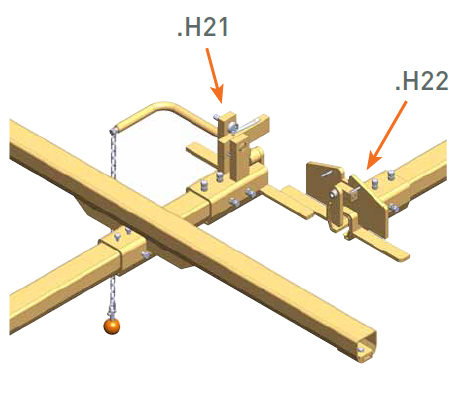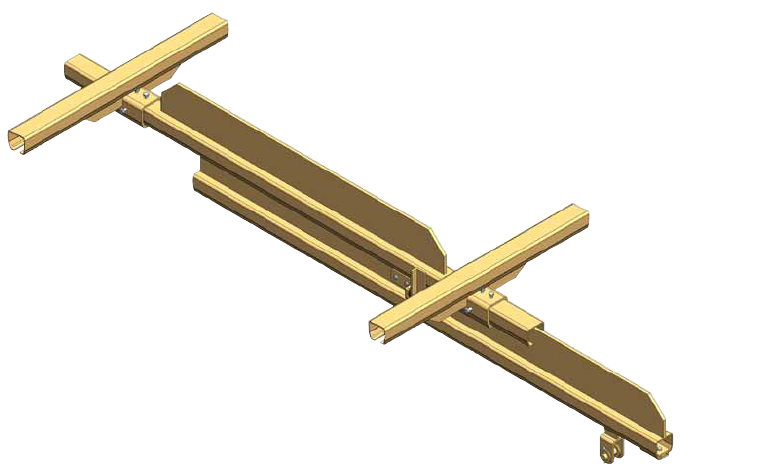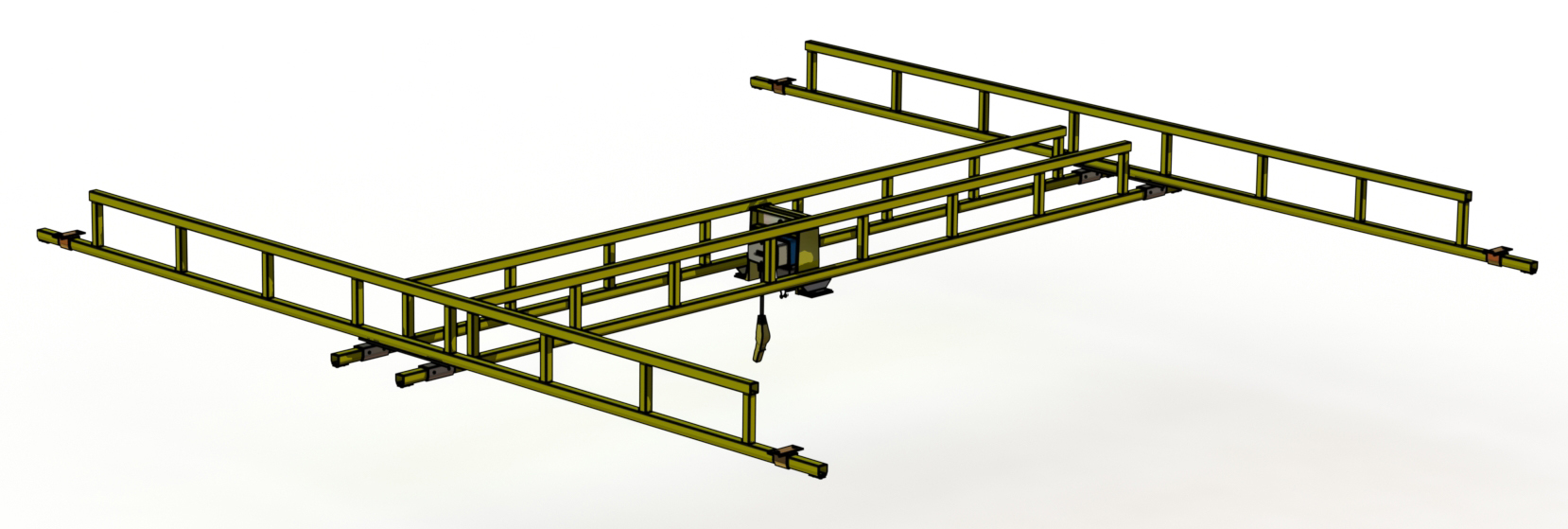Lightweight Cranes
Crane Configurations
 * Images are for Illustration Purposes only.
* Images are for Illustration Purposes only.
POA - Please call for details
Light cranes usually comprise of 2 runway tracks running parallel with a bridge suspended below. The bridge enables a chain hoist or alternative lifting device to be suspended and travel from side to side along the bridge. The bridge can be travelled forwards and backwards along the runway tracks. This enables to operator to lift, move and lower a load anywhere within the working footprint below the light crane.
It is possible to have multiple light crane bridges suspended from the same runway tracks.
Single Girder Light Cranes
Single girder light cranes feature a single track bridge rail. This is the most common type of light crane system. The main advantage of single girder light cranes is that they offer the widest travel distance along the bridge and across the runway tracks.
Double Girder Light Cranes

Double girder light cranes feature a twin track bridge rail with the hoist suspended so that the weight of the load is carried evenly across both rails. The main advantage of double girder light cranes is that they offer a wider span between the runways than a single girder equivalent. It is also possible to add an intermediate runway beam and enable an even longer bridge length.
Low-headroom Light Cranes
Low-headroom light cranes feature a double girder bridge with a raised suspension section for mounting the hoist or alterative lifting device. The Niko product offers the lowest available headroom solution on the market. As a standard, the hoist is suspended within 100mm of the crane support point and in some instances even less. The main advantage of Low-headroom light cranes is that they provide a lifting solution in confined spaces where overhead lifting would not normally be possible.
Monorails
Monorails feature an independent track rail with a trolley that can be used to suspend a hoist or alterative lifting device. The hoist can then travel forward and back along the full length of the rail. Monorails consist of an assembly of straight track sections, curved track bends, junction switches and turn tables. The junction switches and turn table enable a change in direction, allowing the hoist trolley to follow different travel paths.
Light Crane Latching Systems

Latching systems interlock with the bridge of a light crane and enable the hoist trolley to be used on an adjacent monorail or another light crane system. It is possible to combine multiple latching devices within a single light crane system. The main advantage of latching systems is that they enable the use of the hoist or alternative lifting device outside of the normal working footprint of a light crane.
Sliding Cantilever Beams

Sliding cantilever beams are used to enable lifting outside of the normal working footprint of a light crane or monorail system. They feature an underslung cantilever section suspended from a light crane bridge, monorail track or crane runway rails. The cantilever section can then travel past the confines of the suspending rail and enable lifting outside of the normal lifting footprint. This type of system is the ideal solution for lifting and moving a load in and out of containers; or for cranes that need to avoid obstacles within the working area.










